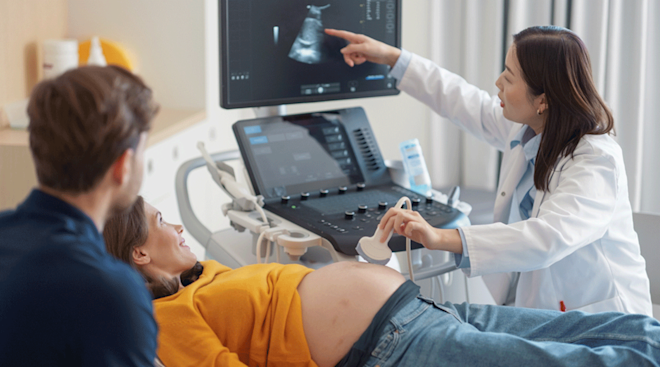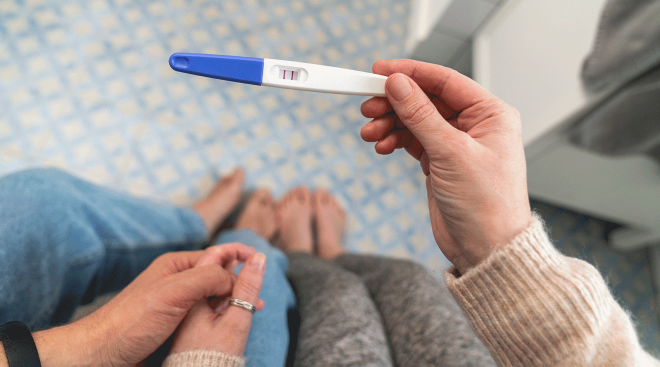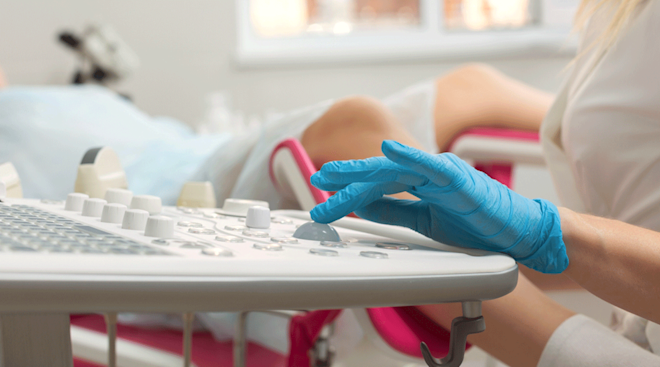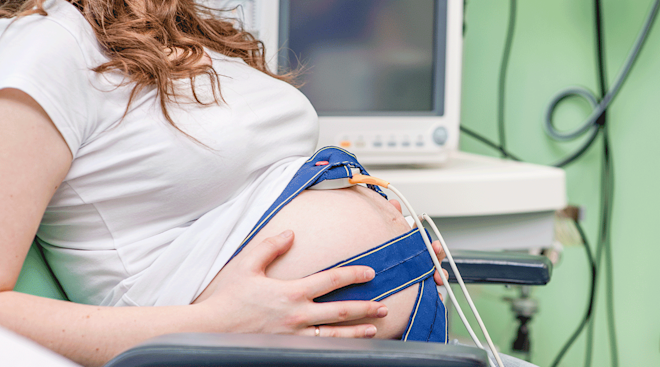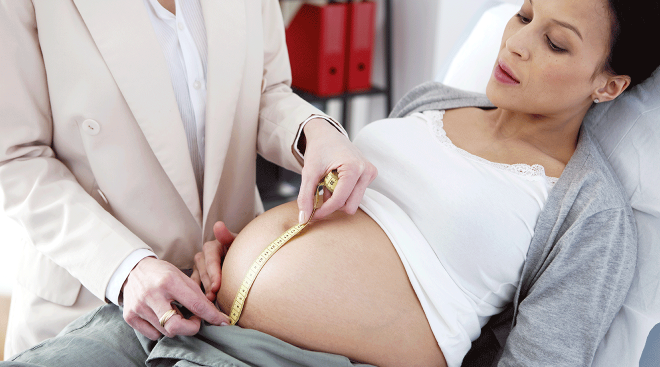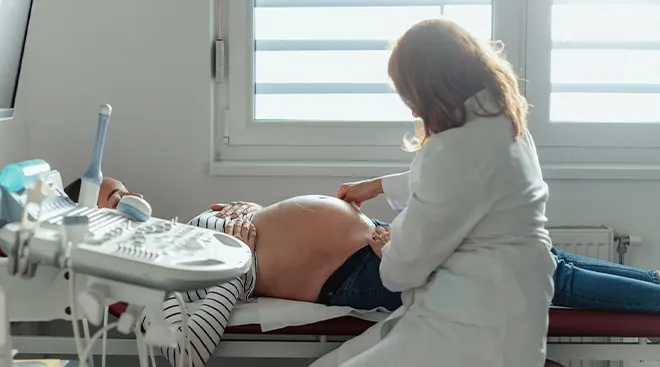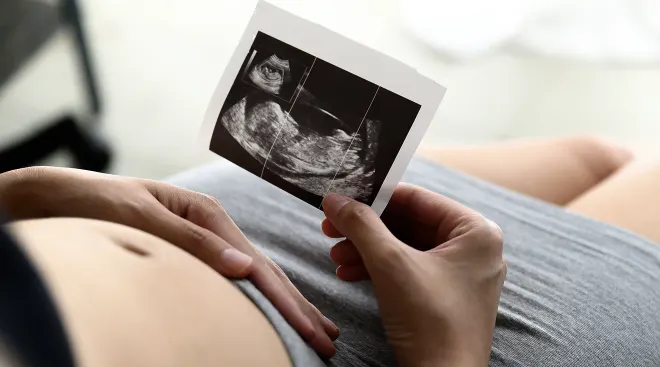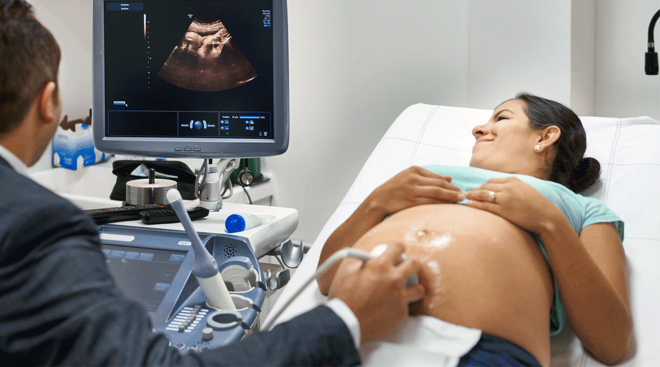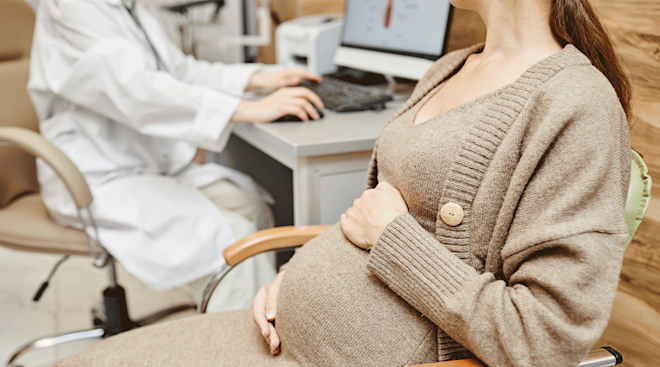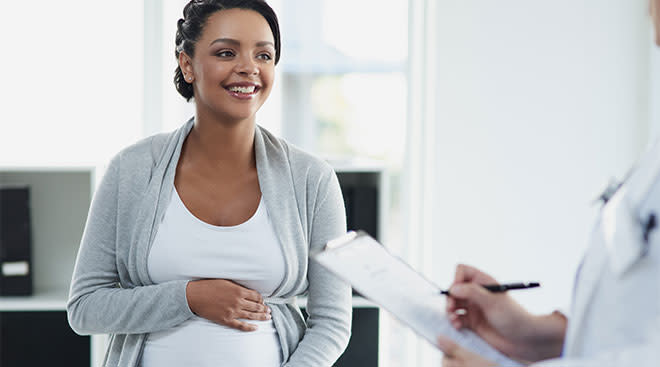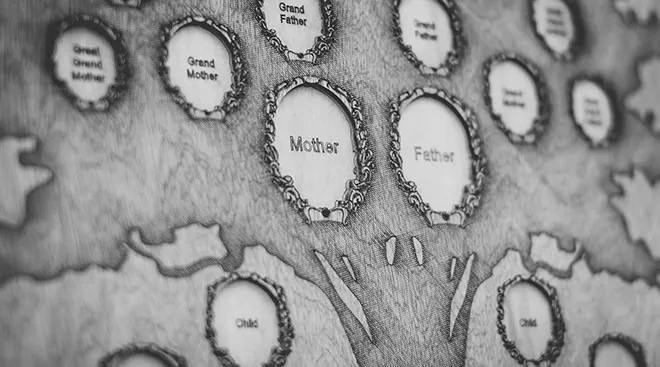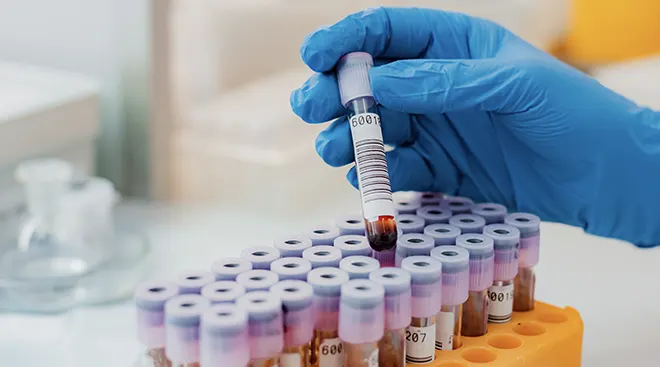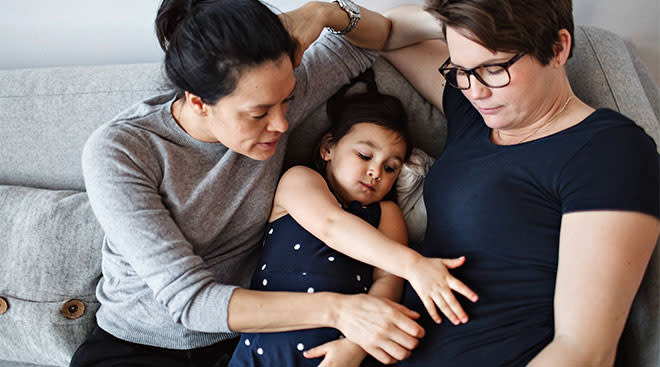Why I Skipped an Amnio Even Though I Was High-Risk
Let’s be clear: This is not a public service announcement. The doctors and technicians at my hospital did not seem to approve of what I did (they looked kind of dismayed, actually). But what I did—or more accurately, what I didn’t do—felt right for me.
I did not get an amnio.
I was well past 35 when I became pregnant, the age that doctors start recommending prenatal testing. Amniocentesis, usually done between 15 and 18 weeks of pregnancy, was the gold standard for determining whether a baby has a chromosomal abnormality, such as Down syndrome. By sticking a needle through my uterus and into the amniotic sac, drawing up some amniotic fluid and examining the cells inside it, my doctor could tell me if my baby had any such abnormality, in a little over a week and with 98 to 99 percent certainty. (At the time, cell-free DNA testing—a non-invasive, low-risk blood test screening that has a 99 percent accurate detection rate and a very low false-positive rate—wasn’t yet available.) Women typically want to know if there are any chromosomal abnormalities, my doctor explained, so they can make the necessary preparations for delivering a special needs child, or decide whether to terminate the pregnancy.
Here’s the catch: I was also told that there was a 1 in 200 chance that the amnio would lead to an infection or cause the amniotic fluid to leak, which would effectively end my pregnancy. Being older, I knew it was possibly my last chance to have a child, and I didn’t want to screw it up—or have my doctor do that for me.
I can’t tell you why I felt that the risk of 1 miscarriage out of every 200 amnio procedures sounded so frightening to me. What if we called it a 0.5 percent chance of miscarriage? Put that way, it sounded a little better. What’s more, the decades-old stat is probably out of date. The chance of miscarriage in centers that do many of these amnio procedures is more like 1 in 400, and at least according to one study done in a New York City hospital, the figure is more like 1 in 1,600. But tell that to the one mom who lost her baby. It’s as if my maternal instincts had kicked in, even though my child was little more than the size of an apple. One in 200 sounded pretty safe, but I wanted totally safe. And what if the news from an amnio wasn’t good? What would we do? I didn’t want to make that decision, and neither did my husband. So we decided to wait and see, betting on the fact that the standard first and second trimester prenatal screenings would reveal, without a doubt, a chromosomally perfect child, making the need for an invasive diagnostic test moot.
Little did we know, when it comes to pregnancy, there is always doubt. Scientists have created lasers that slice through the cornea of an eye with utmost precision. They’ve found ways to keep people alive with an artificial heart. But exactly how your baby will turn out, if it will turn out, seems to be anyone’s guess, especially if you’re an older mom-to-be. Between age 35 and 45, there is a 20 to 35 percent chance of miscarrying, regardless of whether the woman has an amnio or not. At age 35, 1 in 365 women will have a child with Down syndrome, and that stat jumps to 1 out of 100 once you reach age 40. For me, the process of having a baby felt like an endless series of probabilities to be puzzled over and odds we needed to beat. “Should we be worried?” “Should we take the chance?” were questions my husband and I seemed ask each other over and over again.
I went through the typical first and second trimester prenatal screenings, expecting each round to be one step closer to confirming that there was no need for an amnio after all. But as it turned out, these screenings don’t provide answers. Rather, they give you a “risk level” for chromosomal problems, which takes into consideration your age, what your ultrasound looks like and the levels of certain substances found in your blood that are associated with (associated with, mind you, not entirely indicative of) having a child with a chromosomal abnormality.
My doctor calls only when there’s a problem, and I didn’t hear from him after the first-trimester screening—a good sign. But when the results for the multiple marker screen at the start of the second trimester came in, he left a voicemail message asking me to call back. It was Friday afternoon, and I had to wait until Monday to find out what he had to say. The wait was agonizing.
My doctor was matter-of-fact when we finally spoke. The test detected suspicious levels of certain substances, and my risk level was elevated to 1 over 90—indicating a 1 in 90 chance that my baby would have a chromosomal abnormality. It didn’t sound so good compared to my friends’ numbers: They waltzed out of the doctor’s office leaving with numbers like 1-over-a-thousand-something. But is 1 over 90 actually so bad? Just a smidge over 1 percent? Apparently, my doctor thought so. He again suggested an amnio. We said no thanks.
Funny how the brain can twist numbers around to put your nerves at ease. One out of 200 was just too risky for me to have an amnio, and yet I was convinced that I’d be one of the 89 out of 90 women to bring home a healthy baby.
Still, I’d be lying if I said I was Zen throughout my pregnancy. Quite the contrary: I was a nervous wreck. I became quite superstitious, avoiding anything (price tags, addresses, floor numbers, TV channels) that had the number 47 (since Down syndrome results in 47 chromosomes) and purchasing things in packs of 8 (socks, batteries), which in Chinese culture is a lucky number. I’m not very religious, but when I came in for my 20-week ultrasound, I prayed that the image of my son would clear everything up. “See, Mommy,” it would say. “Everything’s fine. It was all a big misunderstanding.”
But as luck would have it, it didn’t. I knew something wasn’t right when we were left alone in the dim exam room as the technician spoke with the doctor outside. It turned out, the ultrasound revealed a bright spot on the baby’s heart—an echogenic intracardiac focus. It’s associated with Down syndrome, we were told, even though a lot of other women see this in their ultrasound and their pregnancies turn out to be normal. It’s what’s called a “soft marker,” the doctor continued, but because of my previous results, it was more concerning than it normally would be. We were immediately ushered down the hall to speak with a genetic counselor. If we wanted an amnio, we had to schedule one now. We had very little time left, she said—just four more weeks before we reached New York State’s legal cut-off for terminating a pregnancy.
Genetic counseling—which relies heavily on your family medical history—is a bit of a joke when your parents are immigrants who were separated from their family in a war-torn country. The woman behind the desk asked me about my aunts, but I wasn’t sure of their names, never mind their medical history. She asked me about my cousins, but I didn’t even know how many I had. My husband wasn’t much help either.
In the end, I decided I still couldn’t do the amnio. I finally realized that, in truth, it wasn’t just because of the miscarriage statistics—I was concerned about an entirely different set of numbers. Only about 25 out of 100 women between the ages of 20 and 30 get pregnant at any given monthly cycle. After age 35, fewer than 10 out of 100 do, and the numbers keep dwindling from there. And yet, by a sheer force of nature, this hiccupping, kicking, twisting little creature grew and grew inside my belly. I had to protect him. I had to meet him and mother him. It didn’t matter how many chromosomes he had.
How I finally welcomed my son into the world was (surprise, surprise) not how I expected. It happened on the date before my due date, after a routine non-stress test that didn’t seem right. After about 24 hours of being in labor, the doctor decided it was time for a c-section. But then and there, my son decided he was ready to come out, and suddenly what seemed like an army of hospital staff rushed into my room. It felt like forever before they cleaned my baby up, gave us the thumbs up, and brought him to my arms. His glistening brown eyes looked from side to side as if to size things up. And then, finally, his eyes met mine, and I could tell instantly that he was, without a doubt, going to be fine.
Please note: The Bump and the materials and information it contains are not intended to, and do not constitute, medical or other health advice or diagnosis and should not be used as such. You should always consult with a qualified physician or health professional about your specific circumstances.
Navigate forward to interact with the calendar and select a date. Press the question mark key to get the keyboard shortcuts for changing dates.



































